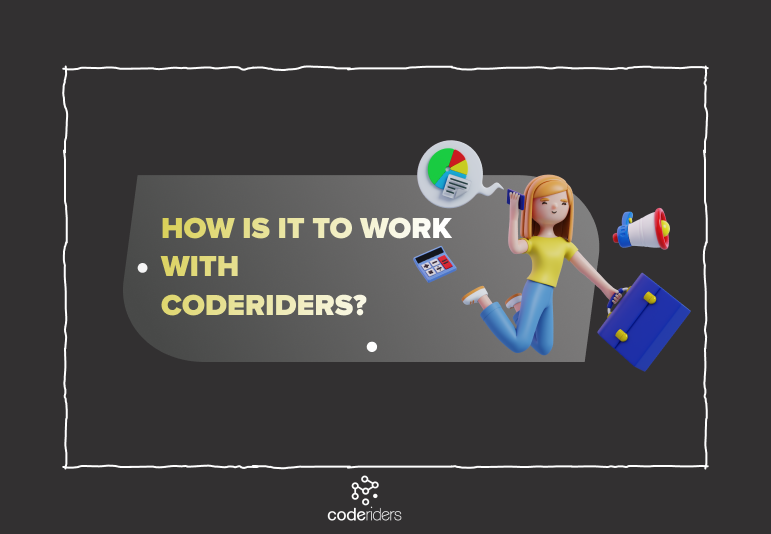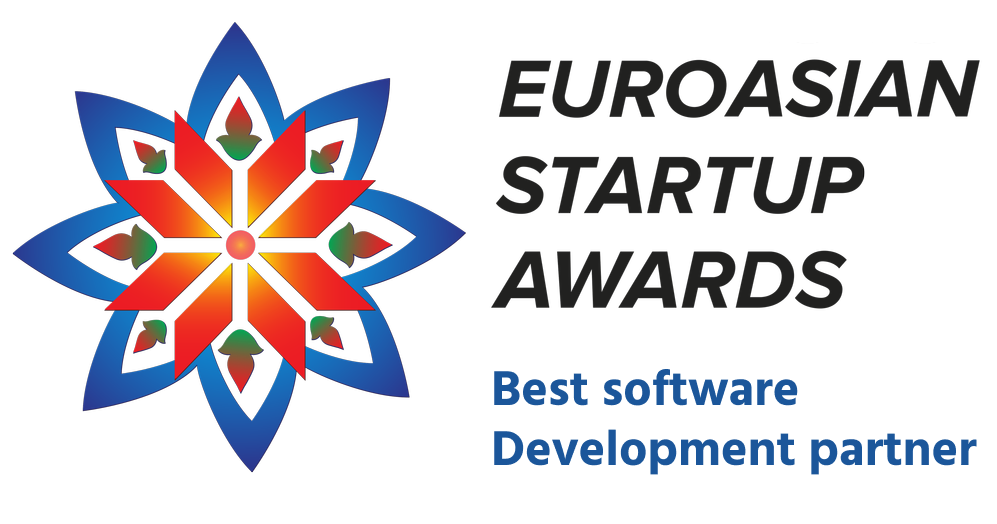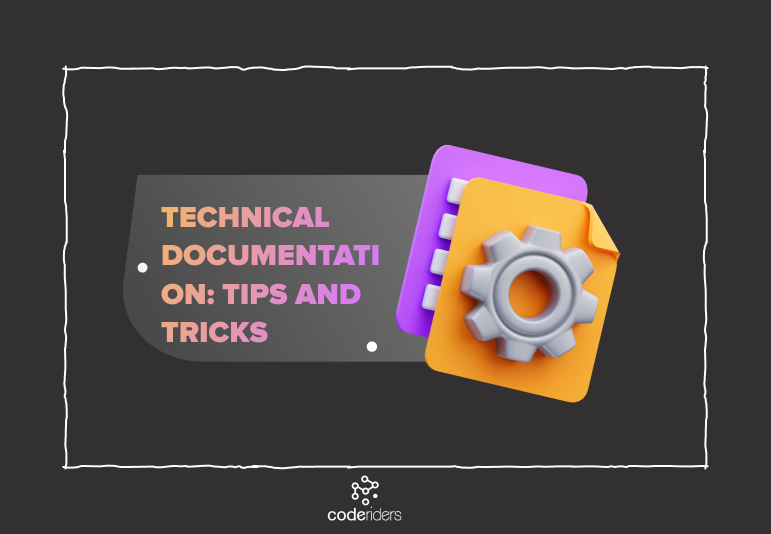A well-structured software development team can be a game-changer for your projects.
Organizational structure says a lot about software development firms.
When hiring a software outsourcing company or a dedicated software developer, surprise them with a single question: "Can you specify how your company works and which organizational structure does it belong to?"
We guarantee that just the answer to this simple question will provide you with a lot of valuable information.
Significance of Organizational Structure in Software Development
An effective organizational structure is pivotal for achieving success in software development. It defines how tasks and processes are directed to meet corporate goals. As you seek to optimize your software development endeavors and hit your KPIs, understanding the organizational structures that can drive your success is crucial.
There are certain recognized organizational structures in the business world. The number of these business management models has increased in tandem with the growth of new companies and businesses.
Subscribe to Newsletters
Currently, there are five types of common organizational structures implemented in the real business world.
Recognized Organizational Structures
Software development firms adopt various organizational structures. Some prioritize strict hierarchies, while others embrace flexibility. Here are the five common structures:
1. Functional Organizational Structure
Often referred to as a bureaucratic organizational structure, the functional organizational structure is the most common and widely used organizational structure. A functional organizational structure organizes the company into different departments according to the area of expertise.
A functionally structured company hires employees for their proficiency in a specific skill. Large companies often work with a functional organizational structure. In such software outsourcing companies, employees are placed where they are most needed in a functional framework, and they are not burdened with jobs outside their skill set.
The employees of each department are controlled by the department leads, who, in their turn, are responsible for the successful operation of their team, help team members, manage cross-department communication, and provide reports to company directors.
Advantages
- Employees are grouped based on their skills and high professionalism in a single field of operation,
- There is a better sense of teamwork, as they work in separate, small teams.
Disadvantages
- Detachment, minimum level of communication with other departments,
- The estrangement of employees from various departments, which hurts team spirit, shared company goals and objectives,
- Unhealthy competition among different departments,
- Management issues.
Sum-up of a Functional Organizational Structure in a Software Development Company:
Departments: IT, UI/UX, Business Development, Marketing, HR, Accounting
Advantages: Expertise-based teams, focused work, stable environment
Disadvantages: Limited cross-department communication, potential for competition
2. Divisional and Multi-Divisional Structures
A divisional organizational structure in software development allows a larger corporation to divide substantial portions of its software development services into semi-autonomous groups. While this formal structure is often better suited to larger organizations, it can also assist a smaller corporation in specific circumstances. In all cases, groups are typically self-managed and focused on a certain component of the company's products or services.
The difference between divisional and multi-divisional and functional structures appears in power distribution. Unlike in functional structures, in divisional structures, software development groups or other divisions' group leads have some freedom to decide without discussing with the head of the company.
Divisions, unlike departments, are more autonomous, having their top executive (usually a vice president) who is in charge of hiring, budgeting, and advertising. Though small businesses rarely use divisional structures, some large software development enterprises still use this model where they have dedicated staff and funds to focus on specific clients' software development needs. Software outsourcing firms that have many clients and separate projects work in divisions to focus on a single software development project.
Advantages
- Employees focus on a single job, task, service,
- There is more centralized leadership.
Disadvantages
- Poor integration with other divisions,
- Possible tax implications,
- No communication between divisions and a feeling of working in separate companies,
- Furious competition.
Sum-up of a Divisional or Multi-Divisional Organizational Structure in a Software Development Company:
Divisions: Semi-autonomous groups for specific tasks
Advantages: Focused groups, centralized leadership
Disadvantages: Lack of integration, competition between divisions
3. Flat Organizational Structure
Flat organizations have no subordinates or superiors. There are no managers. Each employee operates independently and is fully responsible for the quality of their work. It is a popular structure among technology firms, start-ups, and some mid-sized firms. It is uncommon for large organizations to use a flat organizational structure because of the large number of employees. A flat organizational structure works excellent in teams with high team spirit.
Advantages
- Better communication between employees,
- Powerful team spirit,
- Motivation to improve skills and achieve the goals of the software development company they work for,
- More freedom and autonomy, which brings a higher sense of responsibility,
- Faster service delivery because of decision-making freedom.
Disadvantages
- Lack of progression opportunities if a software engineer or other IT specialist cannot self-organize,
- Higher workloads if a software developer or other IT specialist is not experienced enough and cannot handle multitasking in small companies,
- Self-organization issues and confusion.
Sum-up of a Flat Organizational Structure in a Software Development Company:
Traits: No hierarchy, independent employees, strong teamwork
Advantages: Communication, team spirit, fast delivery
Disadvantages: Limited progression, self-organization challenges
4. Flatarchy Structure
A flatarchy organizational structure is a newly defined hybrid model of functional and flat organizational structures. In a flatarchy structure, software development companies do not have complex administrative levels. There are very few subordinates.
Small and medium-sized software development companies with fewer employees are more likely to utilize this organizational structure. When companies expand their teams, they usually grow out of flat and flatarchy organizational structures. However, some continue to use them.
Companies that use flatarchy organizational structure support their employees to pitch any new ideas that might help the company grow. Such software development companies encourage creativity among employees and are always ready to discuss innovative approaches to business suggested by colleagues.
Such companies also stress the importance of the growth of their employees and invest in their team members. These companies have the time to make and shape their employees themselves from the very beginning of their careers.
Advantages
- Cost-efficient structure,
- Strong sense of team spirit,
- Higher employee morale and faster delivery,
- Less dominance and supervision,
- More autonomy and empowerment,
- Faster and more frequent implementations of innovations,
- Heightened productivity,
- Transparent in-house employee as well as client-software vendor interactions,
- Faster decision-making.
Disadvantages
- Leadership confusion,
- Self-organization issues.
Sum-up of a Flatarchy Organizational Structure in a Software Development Company:
Features: Minimal hierarchy, encourages innovation
Advantages: Cost-efficient, employee morale, quick decisions
Disadvantages: Leadership confusion, self-organization issues

5. Matrix Organizational Structure
Software development companies with a matrix organizational structure work in a workplace format where employees report to more than one manager instead of a single manager who oversees every aspect of a project. Usually, software engineers prepare reports for the product, project, and functional managers.
As the name suggests, the reporting relationships in a matrix organizational structure are set up as a "matrix" instead of a standard vertical hierarchy. Software outsourcing companies that have large projects or product or software development processes sometimes use a matrix organizational structure. They hire employees with multiple specialties for team assignments in the meantime to remain in their current employment.
Advantages
- Collaboration and a sense of partnership between different departments,
- Combination of the project and functional management structures,
- Team managers and leaders keep their functional roles.
Disadvantages
- Team roles may not be clearly defined,
- The decision-making process can be slowed down,
- Small or no control over employee performance.
Sum-up of a Matrix Organizational Structure in a Software Development Company:
Traits: Multiple managers, project-oriented
Advantages: Collaboration, combined management structures
Disadvantages: Role ambiguity, slower decision-making
Subscribe to Newsletters
The CodeRiders Approach
Our software development company, CodeRiders has crafted a unique organizational structure that blends the strengths of multiple models. Our journey began as a software development school in 2013, nurturing a sense of unity among our alumni. As we transitioned into a company, we adopted a flatarchy model, enhancing our team spirit and collaborative nature.
Our custom organizational structure aligns ideally with our philosophy.
Our company has 16 professionals, software engineers, designers, business development, and marketing specialists. The software development team is in charge of the quality of our software development services. The business development team is responsible for creating and implementing business and revenue growth plans and maintaining proper communication with partners and potential clients. Unlike functional and divisional organizational structures, at CodeRiders, our two departments are not isolated from each other. They still work together as one team rather than as competing units.
Our company reduced the hierarchy to a minimum. To put it short, we have two leaders: the founder and CEO of our software outsourcing firm and the director of business development. Our CEO and founder is a software engineer himself, so he is in charge of both operational matters and work quality. The director of our business development is responsible for the effective and productive operation of the business development and marketing team.
Why Does Flatarchy Work for CodeRiders?
CodeRiders was initially established as a business development school back in 2013. In just a year, the school has given more than 800 alumni. Most of these alumni later became qualified and skilled software developers and close friends. Some of the students have known each other even before enrolling in the school. They have been close friends, childhood friends, or even family members. In 2014, CodeRiders software development school chose 10 of its best students and switched to a software outsourcing company. Ever since we have developed a strong sense of team spirit.
Our vision: Time is precious. Automation should save it.
Our mission: Build simply powerful systems with state-of-the-art technology and innovations to automate business processes.
Our motto: We desire. Together we achieve.
Benefits of CodeRiders' Approach:
Efficient services: Focused teams, motivated professionals
Unity and collaboration: Strong team spirit, shared goals
Faster delivery: Autonomy and responsibility drive results
Why does CodeRiders work in flatarchy organizational structure?
- We offer faster communication and software development processes.
- There is no risk of misunderstanding among our staff. Our software engineers have learned their profession in CodeRiders software development school and have started their careers with us. Our employees are well aware of our morals and working style. We do not need long-drawn-out discussions that waste your valuable time and money.
- There is no leadership confusion and self-organization issues at CodeRiders. Each of our employees knows what they should do and understands that no one should push them to become better professionals like in schools.
- You avoid wrecked nerves and wasting energy. Software engineers or other IT specialists are more motivated at flatarchy-model software development companies because of their freedom to operate and make decisions. This, in its turn, enhances the quality of communication and service delivery.
- Our employees do not experience stagnation. We have prepared professionals who are responsible for their work and strive for challenging projects.
- Clients save money when choosing software development firms with a flat organizational structure.
- You have more flexibility throughout the software development process.
- We have clear and concise team expertise. Our software developers work only with those software development languages and frameworks they are masters of. On the meantime, we choose team leaders carefully considering the characteristic features of a specific project. Once the leaders are clarified, they take control over the project growth and success.
-
We have a structured process for sharing information and updates through various departments within the team through regular meetings, and brainstorming sessions as well as famous online platforms, such as Slack, Trello, Asana, Jira, etc.
-
We leave the level of client engagement according to the client’s preferences. If the client needs full engagement in the project, we set up a main contact who handles the communication with the client, as well as the client’s feedback, requests, and concerns through calls, meetings, and written communication. We also organize regular stand-up meetings for the client. If the client chooses to be more passive, we first of all make sure, we are clear with all the client requirements, carry on with the effective and fast implementation, and keep the client updated with our work.
-
We have efficient decision-making processes because we gather information from all related departments, listen to all the qualified professionals, analyze, and come up with the strategic decision.
get to know our team and software solutions
Which Companies Can Work with Software Outsourcing Firms that Use a Flatarchy Organizational Structure?
- If you have clearly defined KPIs. You may not have the final picture of your project, but you should know what exactly you want to achieve.
- If you understand the importance of communication. Successful communication requires the involvement of all parties. If you want a flexible, fast, and easy software development lifecycle, you should remain responsive and available.
- If you are well aware of software development engagement models. Provide a clear SOW of your project (if you choose a fixed-price model) or clearly describe each milestone (if you choose a time and material software development engagement model).
free white paper
how to write a solid scope of work sow
Your Software Development Lifecycle with CodeRiders
Our full-cycle software development process is simple. It consists of the following stages:
- Free issue consultation,
- Our solution to your problem,
- Design and software architecture,
- Software development,
- Implementation and QA,
- Maintenance and support.
However, you are also welcome to skip any of these stages if you do not need an all-in-one software development process. We are open to building your solution from scratch, recovering your software solution, updating, or upgrading.
Flatarchy Organizational Structure at CodeRiders:
Traits: Limited hierarchy, strong unity, shared goals
CEO's role: Overseeing operations, supporting developers
Business Development Director: Leads business team
Software Engineers and Designers: Autonomous roles, teamwork
The organizational structure of a software development company shapes its culture, work style, and outcomes. Understanding the different structures and finding a company that aligns with your values and needs is essential when hiring developers and designers. CodeRiders' innovative flatarchy approach showcases the potential of blending structures for optimal results. Remember, a well-structured software development team can be a game-changer for your projects.
Selecting the right software development partner hinges on a clear understanding of the organization's structure. This crucial aspect can significantly influence project outcomes and collaboration. Elevate your hiring strategy by learning more about the organizational structures of software development companies and posing a single, illuminating question: "Could you elaborate on your company's organizational structure?" Unveiling this insight can be the cornerstone of making informed and advantageous decisions.
Having
development
needs?
CodeRiders will address your web and mobile development challenges by creating custom software, helping with outsourcing services, or just consulting on your software development requirements.
Related Articles

7 Best Ways to Find Remote IT Staff

How It Feels To Work With CodeRiders













